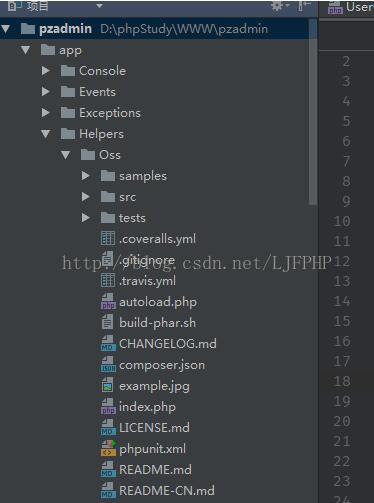DFS(Depth-First-Search)深度优先搜索算法是图的遍历算法中非常常见的一类算法。分享给大家供大家参考。具体方法如下:
?
|
1
2
3
4
5
6
7
8
9
10
11
12
13
14
15
16
17
18
19
20
21
22
23
24
25
26
27
28
29
30
31
32
33
34
35
36
37
38
39
40
41
42
43
44
45
46
47
48
49
50
51
52
53
54
55
56
57
58
59
60
61
62
63
64
65
66
67
68
69
70
71
72
73
74
75
76
77
78
79
80
81
82
83
84
85
86
87
88
89
90
91
92
93
94
95
96
97
98
99
100
101
102
103
104
105
106
107
108
109
110
111
|
#include <iostream>
#include <algorithm>
#include <iterator>
using namespace std;
#define MAX_VERTEX_NUM 10
struct Node
{
int adjvex;
struct Node *next;
int info;
};
typedef struct VNode
{
char data;
Node *first;
}VNode, AdjList[MAX_VERTEX_NUM];
struct Graph
{
AdjList vertices;
int vexnum, arcnum;
};
int visited[MAX_VERTEX_NUM];
int locateVex(Graph G, char u)
{
int i;
for (i = 0; i < G.vexnum; i++)
{
if (u == G.vertices[i].data)
return i;
}
if (i == G.vexnum)
{
printf("Error u!\\n");
exit(1);
}
return 0;
}
void createGraph(Graph &G)
{
int i, j, k, w;
char v1, v2, enter;
Node *p;
printf("input vexnum & arcnum:\\n");
scanf("%d", &G.vexnum);
scanf("%d", &G.arcnum);
printf("input vertices:\\n");
for (i = 0; i < G.vexnum; i++)
{
scanf("%c%c", &enter, &G.vertices[i].data);
G.vertices[i].first = NULL;
}
printf("input Arcs(v1, v2, w):\\n");
for (k = 0; k < G.arcnum; k++)
{
scanf("%c%c", &enter, &v1);
scanf("%c%c", &enter, &v2);
scanf("%d", &w);
i = locateVex(G, v1);
j = locateVex(G, v2);
p = (Node *)malloc(sizeof(Node));
p->adjvex = j;
p->info = w;
p->next = G.vertices[i].first;
G.vertices[i].first = p;
}
}
void DFS(Graph &G, int v)
{
Node *p;
printf("%c", G.vertices[v].data);
visited[v] = 1;
p = G.vertices[v].first;
while (p)
{
if (!visited[p->adjvex])
DFS(G, p->adjvex);
p = p->next;
}
}
void DFSTranverse(Graph &G)
{
for (int v = 0; v < G.vexnum; v++)
visited[v] = 0;
for (int v = 0; v < G.vexnum; v++)
{
if (!visited[v])
DFS(G, v);
}
}
int main()
{
Graph G;
createGraph(G);
DFSTranverse(G);
}
|
再换一种方式来写DFS。具体代码如下:
?
|
1
2
3
4
5
6
7
8
9
10
11
12
13
14
15
16
17
18
19
20
21
22
23
24
25
26
27
28
29
30
31
32
33
34
35
36
37
38
39
40
41
42
43
44
45
46
47
48
49
50
51
52
53
54
55
56
57
58
59
60
61
62
63
64
65
66
67
68
69
70
71
72
73
74
75
76
77
78
79
80
81
82
83
84
85
86
87
88
89
90
91
92
93
94
95
96
97
98
99
100
101
102
103
104
105
106
107
108
|
#include <iostream>
#include <string>
using namespace std;
#define MAXLEN 10
struct Node
{
int data;
Node *next;
};
struct Link
{
int count;
string name;
Node *head;
};
struct Graph
{
Link link[MAXLEN];
int vexnum;
int arcnum;
};
int findIndex(Graph &G, string name)
{
int index = -1;
for (int i = 0; i < G.vexnum; i++)
{
if (G.link[i].name == name)
{
index = i;
break;
}
}
if (index == -1)
cout << "error" << endl;
return index;
}
void constructGraph(Graph &G)
{
cout << "construct graph yooo" << endl;
cout << "enter vexnum" << endl;
cin >> G.vexnum;
string array[] = {"v1", "v2", "v3", "v4", "v5", "v6", "v7", "v8"};
const int size = sizeof array / sizeof *array;
for (int i = 0; i < G.vexnum; i++)
{
G.link[i].name = array[i];
G.link[i].head = NULL;
}
string leftName;
string rightName;
cout << "enter a pair" << endl;
cin >> leftName >> rightName;
while (leftName != "end" && rightName != "end")
{
int leftIndex = findIndex(G, leftName);
int rightIndex = findIndex(G, rightName);
Node *node = new Node;
node->data = rightIndex;
node->next = NULL;
node->next = G.link[leftIndex].head;
G.link[leftIndex].head = node;
cout << "enter a pair" << endl;
cin >> leftName >> rightName;
}
}
bool flag[MAXLEN];
void DFSTranverse(Graph &G, int num)
{
cout << G.link[num].name << " ";
flag[num] = true;
Node *head = G.link[num].head;
while (head != NULL)
{
int index = head->data;
if (!flag[index])
DFSTranverse(G, index);
head = head->next;
}
}
void main()
{
Graph G;
constructGraph(G);
for (int i = 0; i < MAXLEN; i++)
flag[i] = false;
DFSTranverse(G, 0);
}
|
DFS的迭代遍历算法如下:
?
|
1
2
3
4
5
6
7
8
9
10
11
12
13
14
15
16
17
18
19
20
21
22
23
24
25
26
27
28
29
30
|
void DFS(Graph &G)
{
stack<int> istack;
istack.push(0);
cout << G.link[0].name << " ";
flag[0] = true;
while (!istack.empty())
{
int index = istack.top();
Node *head = G.link[index].head;
while (head != NULL && flag[head->data] == true)
head = head->next;
if (head != NULL)
{
index = head->data;
if (!flag[index])
{
cout << G.link[index].name << " ";
flag[index] = true;
istack.push(index);
}
}
else
istack.pop();
}
}
|
感性的朋友可以测试运行一下本文实例代码以加深印象,相信本文所述对大家C程序算法设计的有一定的借鉴价值。
相关文章
猜你喜欢
- ASP.NET自助建站系统的数据库备份与恢复操作指南 2025-06-10
- 个人网站服务器域名解析设置指南:从购买到绑定全流程 2025-06-10
- 个人网站搭建:如何挑选具有弹性扩展能力的服务器? 2025-06-10
- 个人服务器网站搭建:如何选择适合自己的建站程序或框架? 2025-06-10
- 64M VPS建站:能否支持高流量网站运行? 2025-06-10
TA的动态
- 2025-07-10 怎样使用阿里云的安全工具进行服务器漏洞扫描和修复?
- 2025-07-10 怎样使用命令行工具优化Linux云服务器的Ping性能?
- 2025-07-10 怎样使用Xshell连接华为云服务器,实现高效远程管理?
- 2025-07-10 怎样利用云服务器D盘搭建稳定、高效的网站托管环境?
- 2025-07-10 怎样使用阿里云的安全组功能来增强服务器防火墙的安全性?
快网idc优惠网
QQ交流群
您的支持,是我们最大的动力!
热门文章
-
2025-05-29 74
-
2025-05-29 18
-
2025-05-25 96
-
keyword.exe是什么进程 有什么用 keyword进程查询
2025-05-27 83 -
2025-05-27 55
热门评论









